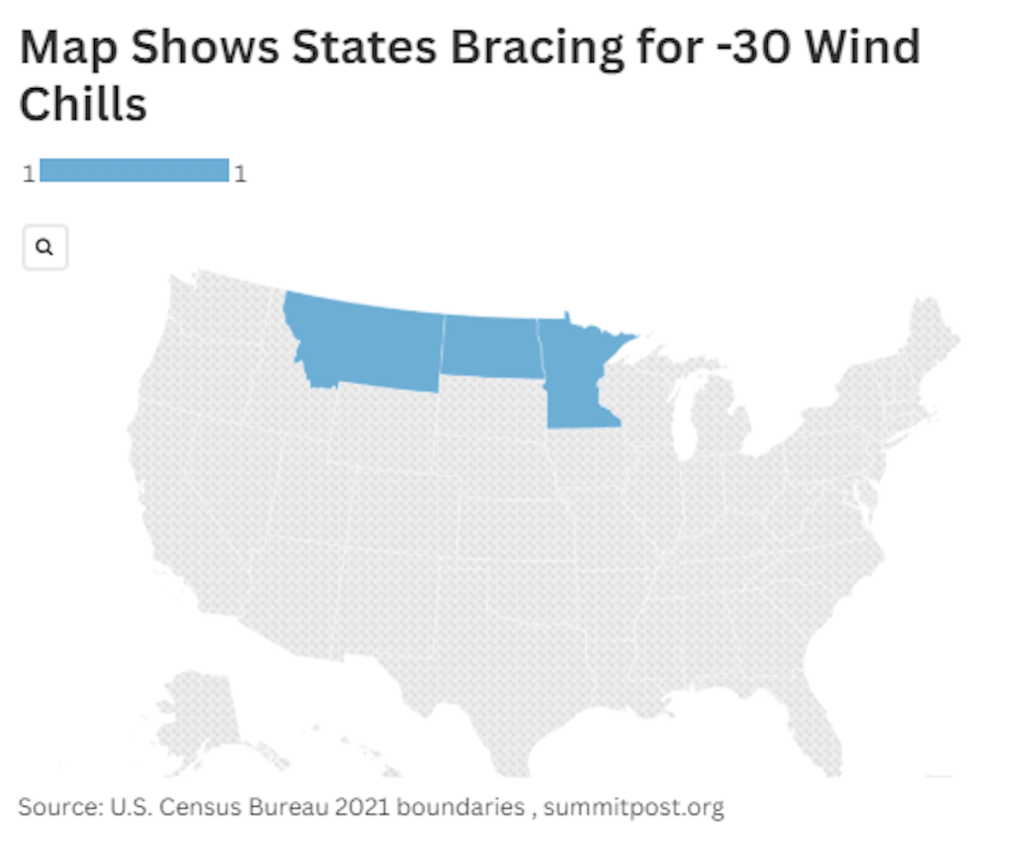Parts of North Dakota, Montana, and Minnesota are currently preparing for extreme cold temperatures as a high-pressure system moves south, bringing an Arctic blast that could result in wind chill temperatures dropping to -30 degrees or below. The National Weather Service (NWS) warns that people exposed to these temperatures could experience frostbite in as little as 10 minutes and may also be at risk of developing hypothermia if left untreated.
In Montana, Richland County is expected to experience wind chills as low as -32 degrees until noon MST on Saturday. Other areas such as Southern and Central Valley, Daniels, Eastern Roosevelt, Northern Valley, Sheridan, and Western Roosevelt counties could see wind chills as low as -37 degrees. In North Dakota, portions of north central and northwest areas are bracing for wind chills of -35 degrees, while northeast and southeast portions of the state could see wind chills as low as -40 degrees. Similarly, Northcentral and northwest Minnesota are preparing for wind chills of -40 degrees, with Southern Cook County potentially experiencing wind chills of -33.
NWS Meteorologist Megan Jones from the Bismarck office emphasized the severity of the situation, stating that these extreme cold temperatures pose a significant danger to people. Jones explained that the cold air is coming from a high-pressure system in the northern Canadian prairies and urged individuals to limit their time outdoors and be prepared with emergency kits if they must travel. She highlighted that the coldest wind chills in the Bismarck region are expected on Friday night but will remain cold throughout Saturday. Additionally, Jones warned that frostbite could occur in as little as 10 minutes in these extreme conditions.
As the cold weather advisories are set to end by Saturday night, other regions in the Midwest and Plains regions of the United States are preparing for Winter Storm Blair. The combination of the Arctic blast and the storm will bring more challenges to these areas with the potential for heavy snowfall and strong winds. Residents in these regions are encouraged to stay updated on weather forecasts and take necessary precautions to ensure their safety during this severe weather event. It is important to follow guidelines from local authorities and meteorologists to minimize the risks associated with extreme cold temperatures and winter storms.













